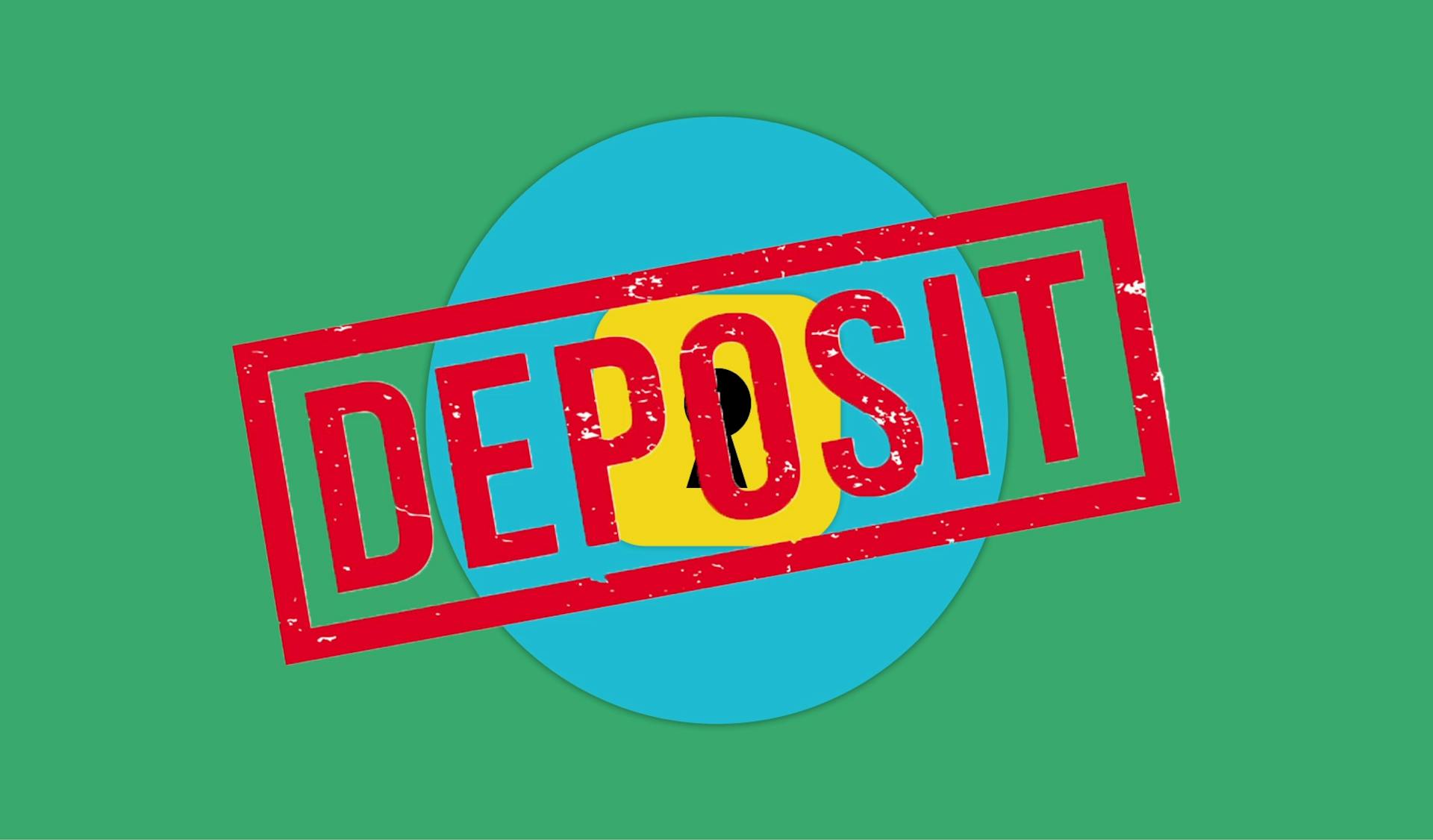
P2P business lending is a game-changer for small businesses and entrepreneurs, offering an alternative to traditional bank loans.
It's a platform that connects borrowers directly with investors, cutting out the middleman and reducing costs.
Through P2P business lending, investors can lend as little as $1,000 to small businesses, earning interest on their investment.
By eliminating the need for banks, P2P business lending platforms can approve loans in a matter of days, not weeks or months.
This speed and efficiency are a major advantage for small businesses that need capital quickly to grow and expand.
Related reading: Private Credit Funds for Retail Investors
How Loans Work
Peer-to-peer business lending is a straightforward process that connects borrowers with investors directly. Borrowers submit an online application, providing basic information such as the loan amount, purpose, and credit history.
Loan terms typically average between three and five years, with interest rates ranging from 6.99%. Borrowers are rated based on their credit grades, which can range from 1 to 12. A minimum credit score of around 600 is usually required, and individuals with recent bankruptcies or tax liens are often excluded.
Investors can fund entire loans or parts of loans, with notes available for as little as $25 each. This helps reduce the risk of investing in a single borrower who may default on their loan.
Broaden your view: Fintech Peer to Peer Lending
Advantages of Loans
Loans can be a great way to get the funding you need, and there are many advantages to consider. The entire process is online, so you don't have to submit any paper documents. This makes it a convenient and streamlined experience.
Funds can be available in a matter of days, which is a significant advantage over traditional loans that often require a long-drawn approval procedure. You can usually utilize the funds in any manner you like, as long as the lender restricts the usage to business purposes.
Most peer-to-peer loans don't carry a prepayment penalty, which means you can pay off the loan early without incurring additional fees. Borrowers turned down by banks may find that they can get a P2P loan, which can be a lifeline for those who need funding.
Here are some of the key advantages of peer-to-peer loans:
- The entire process is online.
- Funds could be available in a matter of days.
- Most P2P loans don't carry a prepayment penalty.
- You can usually utilize the funds in any manner you like.
- Borrowers turned down by banks may find that they can get a P2P loan.
- Easier loan approval
- Fund business expansion
- Great credit-based incentives
How It Works
Peer-to-peer lending is a straightforward process that takes place through a specialized online platform. Borrowers apply online and are assessed based on their credit rating and risk level, earning them an assigned interest rate.
Worth a look: Online Business Ideas
The platform then presents the borrower with available options from investors, who can choose to fund the loan in part or in full. Borrowers are responsible for making periodic interest payments and repaying the principal amount at maturity.
Borrowers can expect to receive faster and more favorable credit decisions, as well as lower interest rates, compared to traditional bank loans. This is because the platform streamlines the process, reducing the need for underwriting procedures.
The platform charges a fee for both borrowers and investors, which can include a 1% administrative fee for lender remuneration. This fee is a small price to pay for the benefits of peer-to-peer lending.
Here's a breakdown of the typical loan terms:
- Loan terms average between three and five years.
- Interest rates average 6.99%.
- Loan amounts can be funded in part or in full.
- Investors can earn returns of more than 10% per year.
Investors can choose to fund entire loans or parts of loans, with some platforms offering notes for as little as $25 each. This allows investors to spread their risk and potentially earn higher returns.
Platforms to Consider
When choosing a P2P lending platform, consider the technology requirements and costs. Building a proprietary platform from scratch can take 8-12 months to develop and deploy, and can be at least four times more expensive than a customized LaaS plan.
A LaaS (Lending as a Service) platform is a cost-effective option that can be up and running quickly. Advanced LaaS platforms include features such as credit review via traditional and alternative data, investor software, and regulatory compliance.
Some popular P2P lending platforms are Prosper, which offers affordable financing, flexible repayment terms, and no prepayment penalties. Other platforms, such as those that use LaaS, also offer a range of features and benefits.
Additional reading: Crowdlending Platforms
Prosper
Prosper is a great option to consider. It offers competitive interest rates on loans, making it an affordable option for businesses.
One of the standout features of Prosper is its flexible repayment terms. This allows businesses to choose a repayment plan that fits their needs, giving them more control over their finances.
Prosper also doesn't charge prepayment penalties, so businesses can repay their loans early without incurring extra fees. This flexibility can be a huge advantage for businesses that want to pay off their loans quickly.
Here are some key benefits of using Prosper:
- Affordable financing with competitive interest rates
- Flexible repayment terms to fit your business needs
- No prepayment penalties
- Fast funding with loans funded as quickly as 48 hours after approval
Overall, Prosper is a borrower-friendly lender that prioritizes helping businesses succeed.
Choosing the Best Websites
You'll want to consider a few factors when choosing a peer-to-peer lending platform. One important aspect is the technology platform used by the lender. A good platform should be able to automate and optimize the operation, delivering all the origination and servicing requirements of an online lender.
P2P lenders can either build their own technology platform from scratch, buy existing software from a vendor, or subscribe to an LaaS program. An advanced LaaS platform will include features such as credit review via traditional bureau data and proprietary scoring models powered by machine learning algorithms.
Camino Financial is a good example of a platform that uses advanced technology to streamline the lending process. They offer a completely safe and effective online process that allows for fast funding.
Here are some key features to look for in a P2P lending platform:
- Credit review via traditional bureau data and proprietary scoring models
- Investor software that automates and improves decision-making and portfolio management
- GDPR compliant with regular cybersecurity updates
- Regulatory compliant for local regions with regular updates
- Omni-channel customer communications options
- Consolidated cross-platform monthly reports
Some platforms may also offer additional features such as easy deployment, rules-based processes, and outstanding technical support.
Choosing a Platform
Developing a proprietary technology platform from scratch can take 8-12 months to deploy, which is a significant timeframe for any business.
Building a platform from scratch requires a fully staffed IT department to maintain and upgrade features and functionality, which can be a costly and time-consuming endeavor.
A proprietary platform can be at least four times more expensive than a customized LaaS plan.
You can either build your own technology platform, buy existing software from a vendor, or subscribe to an LaaS program.
An advanced LaaS platform will include features such as credit review via traditional bureau data, alternative bureau data, and proprietary scoring models powered by machine learning algorithms.
Here are some key features to look for in an LaaS platform:
- Credit review via traditional bureau data, alternative bureau data, and proprietary scoring models powered by machine learning algorithms
- Investor software that automates and improves decision-making and portfolio management
- GDPR compliant with regular cybersecurity updates
- Regulatory compliant for local regions with regular updates
- Omni-channel customer communications options
- Consolidated cross-platform monthly reports
A base platform functionality will include easy to deploy and easy to master features, rules-based processes that can be customized for individual lender requirements, and outstanding technical support and customer service support.
Traditional vs Alternative Loans
Traditional loans from banks often have lengthy approval procedures, which can take weeks to get funds. This is in contrast to peer-to-peer loans, which can provide funds within a few days of your application.
Borrowing limits with traditional small business loans can be high, but you'll need to have a good credit score to qualify for low rates of interest. Peer-to-peer loans, on the other hand, typically have smaller borrowing limits.
If you're turned down by a bank, you may find that you can get a peer-to-peer loan. However, be prepared to pay a high rate of interest if you have poor credit.
Here's a comparison of traditional and alternative loans:
Note that alternative loans, which include peer-to-peer loans, often have more flexible requirements and faster approval times than traditional loans.
Pros and Cons
Traditional loans often have a lengthy approval process and may require a lot of paperwork. On the other hand, peer-to-peer loans offer a faster and more streamlined process, with funds available in a matter of days.
One of the biggest advantages of peer-to-peer loans is the flexibility they offer. Borrowers can usually use the funds for any business purpose they choose, as long as the lender allows it.
The benefits of peer-to-peer loans don't stop there. Many P2P loans don't carry a prepayment penalty, which means borrowers can pay off the loan early without incurring additional fees.
In contrast, traditional loans may have stricter requirements and more stringent approval processes. Borrowers who are turned down by banks may find that they can get a peer-to-peer loan.
Here are some key pros and cons to consider:
Easier loan approval is another benefit of peer-to-peer loans, making them a great option for businesses that need quick access to funding.
Traditional Small Loans
Traditional small business loans can be a viable option for entrepreneurs, but they come with some limitations. These loans usually carry low rates of interest.
One of the biggest advantages of traditional small business loans is the high lending limit. If you're eligible, you could borrow as much as you need, giving you the flexibility to invest in your business. However, this also means you'll need to have a solid business plan and a good credit score to qualify.
The process of getting approved for a traditional small business loan can be lengthy. It could take weeks to get funds, which might not be ideal if you need cash quickly. On the other hand, having a clear plan and a good credit score can help speed up the process.
Here are some key differences between traditional small business loans and other options:
Alternative Small Loans
Alternative Small Loans offer a range of options for businesses that don't qualify for traditional loans. These loans can be a good alternative for businesses with poor credit or those that need quick funding.
You might enjoy: Loans for Commercial Vehicles
Traditional small business loans from banks often have high lending limits, but the approval process can take weeks. Peer-to-peer loans, on the other hand, can provide funds within a few days, but the borrowing limit is usually for relatively small amounts.
Alternative small business loans can offer higher borrowing limits, often with lower APRs than peer-to-peer loans. However, the approval process may require more documentation, such as financial statements and bank records.
Business loans secured from P2P sites tend to have more relaxed requirements than those from banks, but they often require a track record of at least six months. Some platforms will lend as much as $500,000 in this area.
Here are some key differences between peer-to-peer loans and alternative small business loans:
Overall, alternative small business loans can offer more flexible terms and higher borrowing limits, but the approval process may be more complex.
Camino Financial: Best Choice
Camino Financial is a great option to consider for your small business loan needs. They offer loans ranging from $10,000 to $50,000 at annual rates from 12% to 40%.
One of the best things about Camino Financial is that their entire process is completely safe and effective online, which allows them to provide fast funding. They only charge a closing fee, and there are no other hidden fees.
Your monthly payments will be fixed and will never change during the loan term. There is no early payment fee if you decide to pay off your loan at any time.
Another benefit of Camino Financial is that you don't need to put up any collateral for your loan request. This makes the process much easier and less risky for business owners.
Here are some key benefits of Camino Financial at a glance:
- Loans ranging from $10,000 to $50,000
- Annual rates from 12% to 40%
- No hidden fees
- No early payment fee
- No collateral required
Overall, Camino Financial is a great choice for business owners who need a loan quickly and easily.
Getting Started
To get started with p2p business lending, open an account with a P2P lender institution to lead the process. They may ask you to pay some amount by debit card or direct transfer.
You'll need to lend an amount of money for a fixed period. This is a crucial step in the process.
Some institutions offer an "auto bid" feature, which allows you to set limits on how much you want to lend in each borrower and the interest rate you want.
What Are the Risks?
The risks associated with P2P business lending are real, but they can be managed with the right knowledge and tools.
One of the biggest risks is credit default, where the borrower fails to pay back the loan. This can be mitigated by using a loan screener tool to find borrowers with a good credit history.
The Financial Services Compensation Scheme does not cover money lent via P2P websites, unlike banks. This means that lenders are taking on more risk.
However, many P2P loan websites have contingency funds in place to pay out if a borrower defaults. These funds vary from one site to another, so it's essential to check what's available before committing your money.
Another risk is early or late repayment, which can affect your profit. If a loan is paid early, you may not be able to lend the money out again as quickly as you would like.
Intriguing read: Mobile Money Business
Here are some of the risks associated with P2P business lending:
- Risk of credit default: 1 in 5 loans may default, depending on the borrower's credit history
- Risk of early or late repayment: can affect profit and ability to lend again
- Risk of the P2P site going bust: regulated by the Financial Conduct Authority in the UK, but still a risk
- P2P lending and tax: money earned is taxable, but there are tax-free options available
It's essential to be aware of these risks and take steps to manage them. By doing your research and using the right tools, you can minimize your exposure and maximize your returns.
Frequently Asked Questions
Is P2P lending illegal?
No, P2P lending is not illegal in the US, but it is treated as an investment and borrowers are not protected by the same laws as bank deposits.
How profitable is peer-to-peer lending?
Peer-to-peer lending can generate returns ranging from 5% to 9% per year, with some investors achieving higher returns of 10% or more. Explore the world of P2P lending to discover its potential for steady, long-term income.
Do you need a license for peer-to-peer lending?
Peer-to-peer lenders may need specific state licenses, such as a money transmitter license, depending on their activities and location
Sources
- https://www.caminofinancial.com/en/blog/business-finance/peer-to-peer-business-lending/
- https://impact-alliance.org/peer-to-peer-business-lending/
- https://www.yieldstreet.com/blog/article/peer-to-peer-lending-investing-guide/
- https://corporatefinanceinstitute.com/resources/wealth-management/peer-to-peer-lending/
- https://www.turnkey-lender.com/blog/how-to-launch-a-peer-to-peer-lending-operation-6-critical-components/
Featured Images: pexels.com


